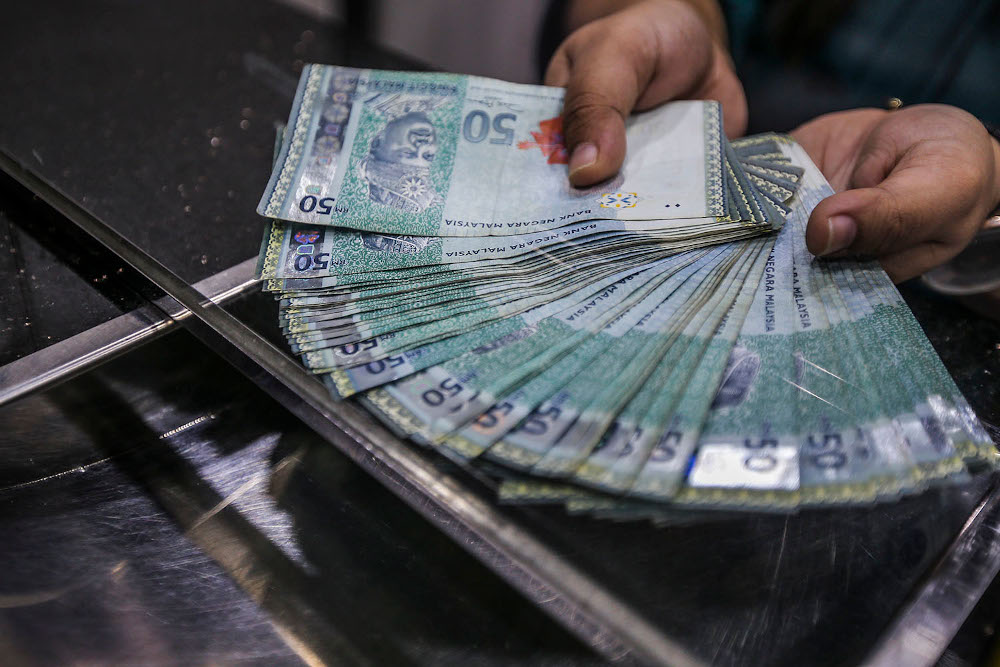
Published in Malay Mail, Asia News Today & Business Today, image by Malay Mail.
The case for moving towards serious consideration of a taxpayer-based retirement savings system to complement and supplement the Employees Provident Fund (EPF) for the B40 and lower M40 – whose savings have been depleted as a result of the i-Sinar, i-Lestari, and i-Citra withdrawal schemes – should be supported.
Such a tax would could be designed to be progressive and specifically targeted to benefit the B40 (and those in the M40) whose EPF accounts are insufficient come “retirement time”.
According to the EPF CEO Datuk Seri Amir Hamzah Azizan, “[u]p to 46% [of] members of the Employees Provident Fund (EPF) below the age of 55 are having less than RM10,000 in their [accounts overall]”.
The withdrawal schemes have seen the EPF’s threshold for what’s deemed as “basic savings” set at RM240,000 by the age of 55 “… [recording] a drop from 36% to 27% …” (“Almost half of EPF contributors have less than RM10,000”, The Malaysian Reserve, September 27, 2021).
By decomposition into the two EPF accounts, “… [around] 6.3 million Account 1 holders and nine million Account 2 holders [have] less than RM10,000 balance” as highlighted by Professor Geoff Williams (“No time for pensions complacency”, The Sun Daily, October 22, 2021).
According to Professor Geoff Williams also, out of the 15.3 million people in employment, around 3.8 million are in the informal sector with no regular pension coverage. And out of the approximately 11.6 million who work in the formal sector, 4.1 million lack formal pension cover.
It makes sense to, therefore, reduce (over-)reliance on the EPF to provide for private sector retirement and come up with a kind of mix and match framework akin to a hybrid between taxpayer-funded and social insurance scheme for healthcare.
So, if the government wishes to broaden the fiscal base, instead of the GST which is inherently regressive even where the proceeds return to the lower income in the form of unconditional cash transfer (UCT) or even a universal basic income (UBI), a progressive tax system designed and purposed to serve a state or universal pension scheme is fairer.
In an EMIR Research article, “Budget 2022 – Please consider very carefully before bringing back the GST” (October 27, 2021), it’s said that the GST, unlike the SST, has that reverse (or if you will, negative) cascading effect which effectively means that the former allows for the X% imposed to be deducted for input tax purpose, i.e., reclaimable.
But, critically, the effect on the consumer is still the same. And in fact, the GST is even more inflationary compared to the SST due to its expansive and pervasive scope.
In the final analysis, the impact of the GST (which was replaced by the SST in September 2018) on headline and core inflation is more significant.
Who could forget the announcement in the news – as already projected by Bank Negara Governor Datuk Nor Shamsiah Yunus the year before (“BNM: SST’s impact on inflation should not be as significant as GST”, The Edge Markets, August 17, 2018) – that we were in so-called “deflation” (“negative” inflation or rather disinflation that’s not broad-based) territory at the beginning of the 2019 (see, e.g., “Malaysia hits deflation for first time since 2009 global crisis”, The Star, February 22, 2019 and “Deflation returns in Malaysia after nearly a decade”, ING, February 22, 2019)?
Any inflationary pressure in the succeeding period would be from a lower base – “offsetting” the impact as such.
In another EMIR Research article, “Budget 2022 – taxation from the perspective of a simplified stock-flow analysis” (October 25, 2021) it’s mentioned that in practice, the GST is effectively ineffective in combating transfer pricing (partly) because it’s mainly to do with exploiting the tax loopholes such as deductibles and allowances.
This rather than as typically understood in terms of cross-border transactions, i.e., differential tax regimes as the primary factor (which is to be distinguished from the rate of the corporate tax per se).
As a result of the Inland Revenue Board (LHDN)’s stepping up of the audit measures as part of tightening the tax compliance and enhancing enforcement, revenue leakages from transfer pricing have reduced considerably over the years.
From RM155.9 million in 2014, the revenue collected (from transfer pricing audits) – by the LHDN’s Multinational Tax Branch – increased almost four-fold to RM582.6 million in 2018 within a span of five years (“Transfer Pricing Challenges that Keep Taxpayers Awake at Night” by Foo Meng Huei, Song Sylvia & Kishenjeet Dhillon published in The Tax Guardian, Chartered Tax Institute of Malaysia/CITM).
The government continues to tighten transfer pricing audit measures. More recently, a new Section 113B(1) of the Income Tax Act 1967 – under the purview of the Finance Act (2020) – provides that “where a company fails to furnish Contemporaneous [i.e., at the time of the said transaction] TPD [transfer pricing documentation] upon request by the [LHDN], the taxpayer may be prosecuted” has been in effect as of January 1, 2021.
The point is, the clamp down on transfer pricing has been done effectively and independently of the GST.
The point of controversy is the practice of transfer pricing in the context of exploiting the use of deductibles and allowances as part of the (budgetary) off-set which can also be the legal part of aggressive tax avoidance.
The legality or otherwise of the tax avoidance measures depend on a complex host of factors such as the determination of the LHDN (as to whether there was sufficient arm’s length transaction) and whether there exists a tax loophole that could be successfully leveraged.
Also, the existence of free trade areas blunts GST as anti-transfer pricing tool. There are basically two scenarios here, namely that of the EU model (with the Comprehensive and Progressive Trans-Pacific Partnership or CPTPP included) on the one hand and a looser free trade arrangement (FTA) like the Asean Free Trade Area (Afta) on the other.
Under the EU model, transfer pricing has been a field day for the multinational companies (MNCs), especially Big Tech. Under the “Double Irish Dutch Sandwich” tax avoidance scheme, the effective tax rate was near-zero because, e.g., under EC Directive 2003/49 interests and royalty payments made by Company A in one member state to Company B in another member state are tax-free.
Under the Afta model, rules of origin (ROO) means that the non-tariff barrier (NTB) within the free trade area coupled with zero or near-zero tariffs (as a form of taxation) can discourage the need for transfer pricing.
Returning to substituting the GST with a broad-based but inter-temporal consumption (i.e., for retirement) tax albeit deferred for the future, this should be paid into a separate account administered by a government agency or an appointed collector on behalf of the State but similar to the EPF in mandate.
By paying this tax, two things are simultaneously achieved:
- The fiscal base is expanded – to include those not previously paying income tax;
- As a contributor (i.e., taxpayer), he/she is, therefore, entitled to a State-managed pension (which could be deposited in Bank Negara to earn interest, among others).
In effect, the payout derived from the tax (in due time) would be inter-generational. That is, the present generation of tax contributors would be funding for the retirement of the future generation.
Ideally, it should be mandatory for all B40 income earners (as newly reclassified based on the Household Income & Basic Amenities Survey Report 2019), i.e., including those qualified to pay income tax. The tax schedule would progressively rise accordingly. As pension, the contributor will receive a monthly payment on retirement.
Towards that end, it’s proposed that the EPF final payout for those affected by the (emergency) withdrawal schemes or have very low outstanding savings below a certain threshold be required to leave a minimum sum upon reaching 55 years – analogous to that of the Central Provident Fund (CPF) of Singapore.
Instead, like a pension, a monthly minimum payment be paid out while it’s expected that the contributor could continue working for another ten years to allow for further contributions to accrue.
Upon effective retirement, the State should ensure that there’s a further option in the form of a lifetime annuity scheme preferably run by a government-linked company (GLC) or a GLC bank. This post-55-65 years annuity could offer different sub-schemes depending on the financial status and needs of the pensioner.
At the same time, the funds of those having low outstanding sum in the EPF should be specifically invested in high-yield government bonds that’s issued at coupon rates of up to 7% or more – as a “one-off”.
Others also could join what’s in effect a type of basic state pension (BSP) – or universal basic pension (UBP) as also advocated by Professor Geoff Williams – if they want to.
In conclusion, a BSP/USP based on progressive taxation can help to cover for the retirement requirements of the B40 without necessarily burdening their current budgetary needs.
Dr Rais Hussin & Jason Loh Seong Wei are part of the research team of EMIR Research, an independent think tank focused on strategic policy recommendations based on rigorous research.

